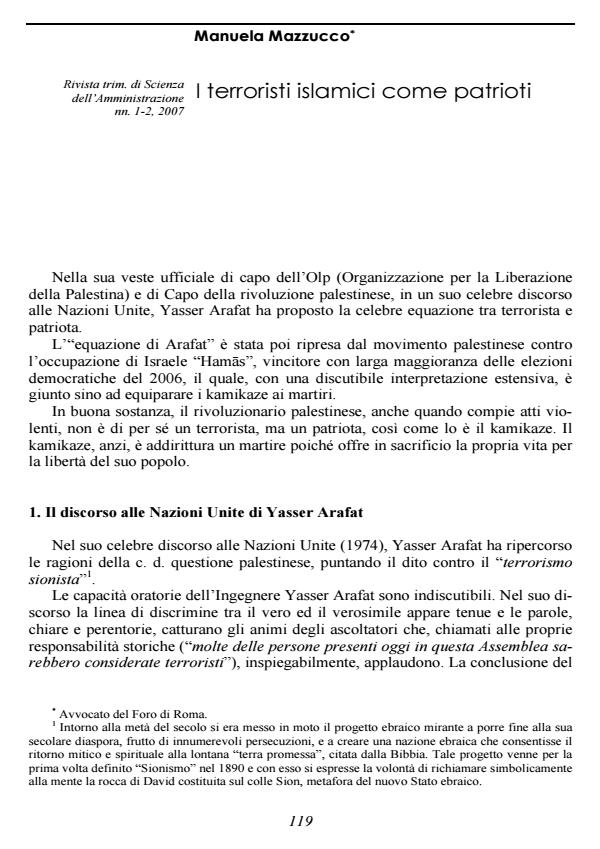I terroristi islamici come patrioti
Titolo Rivista RIVISTA TRIMESTRALE DI SCIENZA DELL’AMMINISTRAZIONE
Autori/Curatori Manuela Mazzucco
Anno di pubblicazione 2008 Fascicolo 2007/1-2
Lingua Italiano Numero pagine 10 P. 119-128 Dimensione file 259 KB
DOI
Il DOI è il codice a barre della proprietà intellettuale: per saperne di più
clicca qui
Qui sotto puoi vedere in anteprima la prima pagina di questo articolo.
Se questo articolo ti interessa, lo puoi acquistare (e scaricare in formato pdf) seguendo le facili indicazioni per acquistare il download credit. Acquista Download Credits per scaricare questo Articolo in formato PDF

FrancoAngeli è membro della Publishers International Linking Association, Inc (PILA)associazione indipendente e non profit per facilitare (attraverso i servizi tecnologici implementati da CrossRef.org) l’accesso degli studiosi ai contenuti digitali nelle pubblicazioni professionali e scientifiche
I terroristi islamici come patriotiIn its official garment of head of the Palestine Liberation Organization, during its celebre speech to the United Nations, Yasser Arafat has travelled over again the reasons of the Palestinian issue, proposing the equation between terrorist and patriot and aiming the finger against the sionist terrorism. The equation of Arafat has been then resumption from the Palestinian movement against the occupation of Israel Hamas, winner of the elections democratics of 2006 with wide majority, which, with a debatable extensive interpretation, is reached until to equiparare the kamikaze to the martyrdoms. In good substance, the Palestinian revolutionary, also when he completes violent actions, is not a terrorist, but a patriot and a martire: he offers in sacrifice the own life for the freedom of its people. The oratorial abilities to the Engineer are unquestionable, but it cannot not be emphasized that while the combatant Muslim is one that does not hesitate to kill also of the unarmed civilians, Christian martire was and is a not violent one.
Manuela Mazzucco, I terroristi islamici come patrioti in "RIVISTA TRIMESTRALE DI SCIENZA DELL’AMMINISTRAZIONE" 1-2/2007, pp 119-128, DOI: